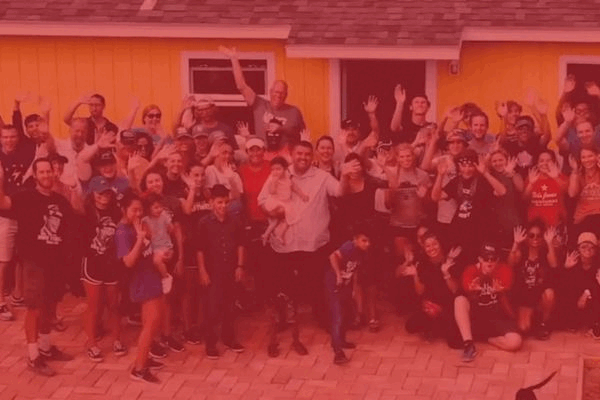Young Life is committed to reaching every kid, but in order to do that we have to get a little creative. We’ve seen the need with teen parents, and YoungLives has grown from just an idea to a movement that is literally impacting generations in an exponential way. YoungLives boasts 17k teen parents served worldwide in 590 ministries (33 counties).
But, the need is great. And so, we’ve gotten creative yet again in how we are scaling up ministry. One creative idea started with partnerships with strategic churches and the rest is literally history still being written!
Inspiring a Volunteer Movement through YoungLives
In the fall of 2023, YoungLives was awarded a grant to launch the Church Collaboration Pilot in three divisions at three camp properties. This initiative funded 70 childcare volunteers from six strategically selected churches, inspiring new ministry after the camp experience, and significantly increasing volunteer diversity. Volunteers who served returned to their communities eager to contribute time, talent, and resources to start new ministry.
Pastor Marshall Benbow, who attended with fifteen childcare volunteers from his church, reflected on the experience, “This was a great fit for us because we are called to make disciples who live from the gospel crossing ethnic and economic lines and YoungLives camp gives us a chance to do all that in one shot.”
“That’s Generation Changing”
The volunteers served hundreds of moms and children with a holy payoff at the end of the week-long mission’s trip, getting to see moms come to know Christ, changing their families forever. Volunteers allowed camp to happen for moms to participate in fun activities, Club, and time with their leaders.
On the last day of camp, everyone gets together from babies to moms to volunteers and staff. Everyone got to experience generation-changing decisions in the say-so. It’s a beautiful week for everyone - including all of the volunteers!
This pilot is proving to be an onramp for churches that previously knew little about the ministry and to inspire communities to launch new YoungLives AND Young Life areas. In just one year, this pilot has quadrupled the number of childcare volunteers and as a result, three new ministries have started. We believe this pilot is a scalable model that will continue to inspire a volunteer movement across the entire mission.
Watch five minutes of Pastor Benbow’s sermon on camp here:
If you are interested to learn more of the innovative ways we’re scaling YoungLives ministry, the team would love to share more! Contact the YoungLives team to learn more!





